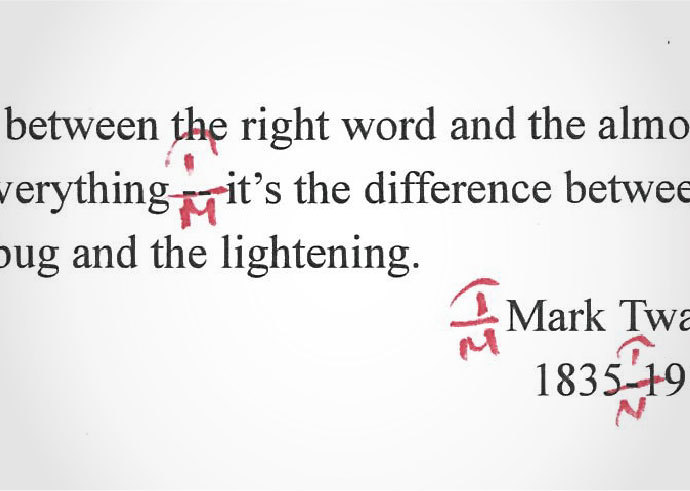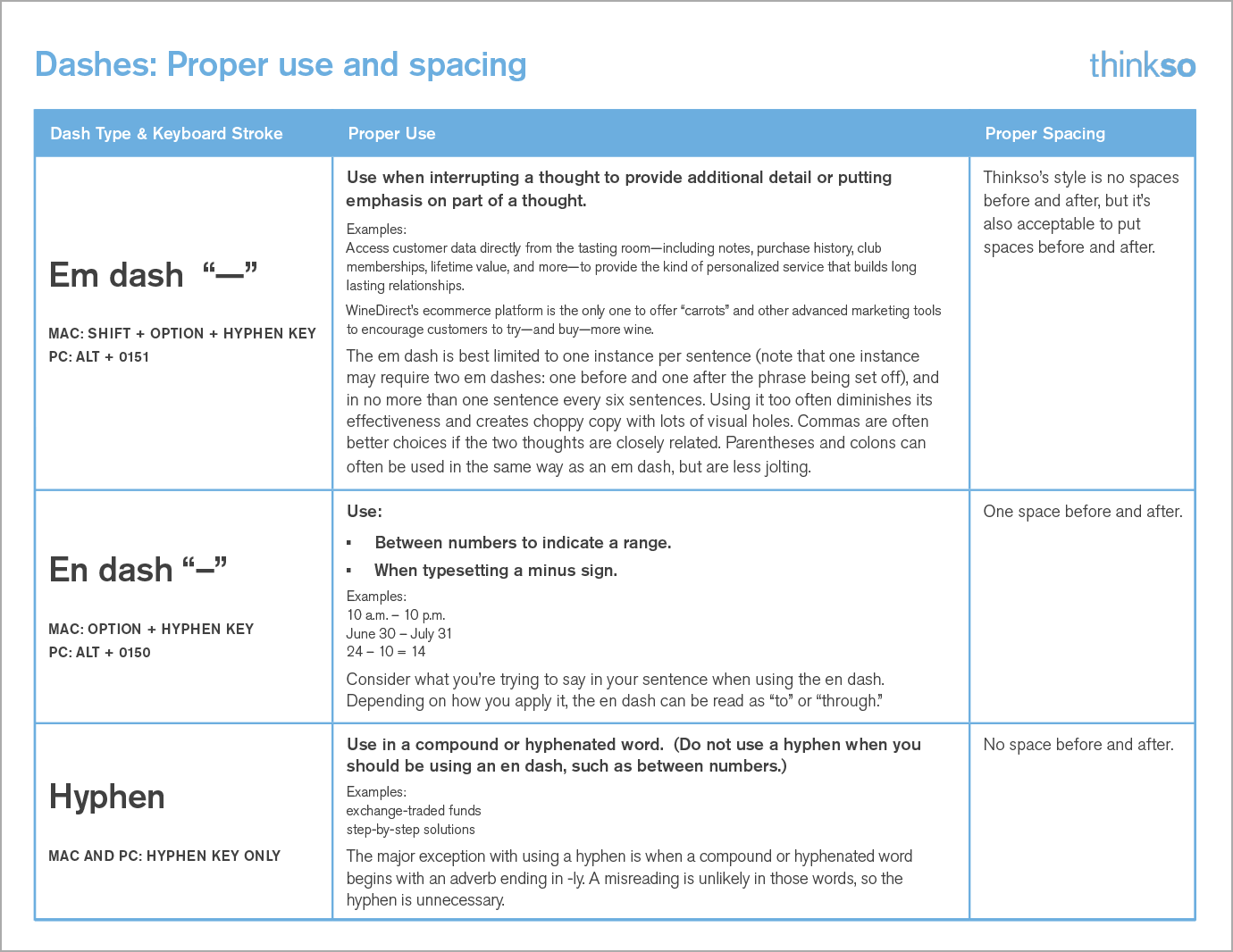When Writing, You Can Most Effectively Use A Dash
Tighten your writin': Dash it all

Tighten Your Writin' is an ongoing series dedicated to writing tips and best practices.
It's no secret that proper punctuation adds valuable clarity and credibility to your writing. Beyond commas, periods, and exclamation points, dashes are a powerful editorial tool for emphasizing parts of your larger message. But in this age of tweets, emails, and other informal digital communications, dashes are probably the most often used — and misused — form of punctuation. For those who want to clean up their writing for when it counts, and save their wild use of dashes for when they are dashing off (sorry!) a quick text, this article is for you.
At Thinkso, our editorial style guide dictates everything we write — including when, where, and how to use dashes. Take a look at some of the quick style tips we follow, and feel free to download our rubric and use it in your own writing.

The hyphen "-"
- Keyboard stroke: hyphen key only
- Proper spacing: No space before and after
Hyphens are used in either a compound or hyphenated word, typically to avoid a misreading in a sentence. Do not use a hyphen between numbers.
- Examples: exchange-traded funds step-by-step solutions
The major exception with this particular dash is when a compound or hyphenated word begins with an adverb ending in -ly. A misreading is unlikely in those words, so the hyphen is unnecessary.
The en dash "–"
- Keyboard stroke: Option + hyphen key
- Proper spacing: One space before and after
The en dash goes between numbers to either indicate a range or typeset a minus sign. It can also be used between words to represent conflict, connection, or direction.
- Examples: 10 a.m. – 10 p.m. June 30 – July 31 24 – 10 = 14
There is a north–south railway in the same area as the highway that runs east–west.
Context is key when using the en dash, so take a minute to consider what you're trying to say in your sentence. Depending on how you apply it, the en dash can be read as "to" or "through."
The em dash " — "
- Keyboard stroke: Shift + Option + hyphen key
- Proper spacing: No spaces before and after (This is our style preference. You'll certainly see it surrounded by spaces in various places, including the New York Times.)
Arguably the most versatile punctuation mark, the em dash can take the place of commas, parentheses, or colons — in each case to slightly different effect. Use the em dash when interrupting a thought to provide additional detail or putting emphasis on part of a thought.
- Example: Access customer data directly from the tasting room — including notes, purchase history, club memberships, lifetime value, and more — to provide the kind of personalized service that builds long lasting relationships.
The em dash is best limited to two appearances per sentence, and in no more than one sentence every six sentences. Using it too often diminishes its effectiveness and creates choppy copy with lots of visual holes. If you have two thoughts in your sentence that are closely related, you can use a comma in place of an em-dash to connect them. Parentheses and colons can also be used in the same way as an em-dash and are less jolting.
When Writing, You Can Most Effectively Use A Dash
Source: https://thinkso.com/news/tighten-your-writing-dash-it-all
Posted by: holzbargeres.blogspot.com

0 Response to "When Writing, You Can Most Effectively Use A Dash"
Post a Comment